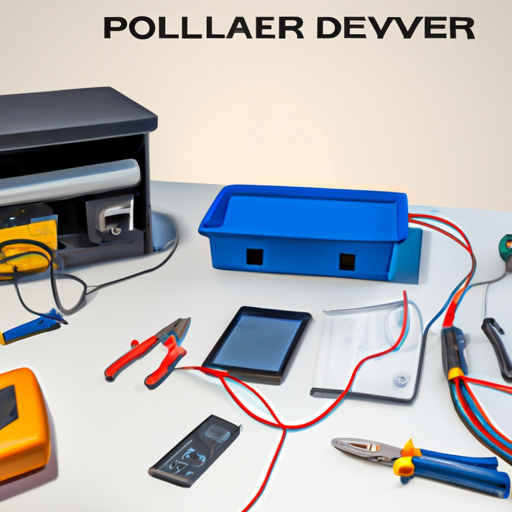Are you tired of relying on traditional power sources and want to have control over your own energy? In this article, we will guide you through the process of building your very own portable power station. From choosing the right battery and inverter to selecting the perfect solar panel setup, we will provide you with tips and considerations to design a compact and efficient system that meets all your power needs. So let’s get started!
Selecting the Right Battery and Inverter
When selecting the right battery and inverter, it’s important to consider the power capacity and compatibility with your intended devices. The battery capacity refers to how much energy it can store, so you need to ensure that it matches your power needs. If you plan on running power-hungry devices like laptops or refrigerators, opt for a higher capacity battery. On the other hand, if you only need to charge small gadgets like smartphones or tablets, a lower capacity battery will suffice. Additionally, inverter efficiency is crucial as it determines how much power is lost during conversion from DC (battery) to AC (devices). Look for inverters with high efficiency ratings to maximize your power usage and minimize wastage.
Choosing the Ideal Solar Panel Setup
To choose the ideal solar panel setup, you’ll need to consider factors such as wattage, size, and compatibility. When it comes to portable power station efficiency, finding the right solar panels is crucial. Start by determining the wattage you need based on your power requirements. Consider the size of the panels and make sure they can fit into your designated space. Compatibility is also important – ensure that the solar panels are compatible with your portable power station’s charging system. To make things easier, consult a reliable solar panel installation guide that provides step-by-step instructions for setting up your panels correctly. By following these guidelines, you can maximize the efficiency of your portable power station and harness clean energy from the sun to keep your devices powered wherever you go.
Essential Components for Your Power Station
Make sure you have all the essential components for your power station, such as a reliable battery, efficient inverter, and durable casing. When it comes to battery selection, consider factors like capacity and voltage compatibility with your devices. A lithium-ion battery is a popular choice due to its high energy density and longer lifespan. Additionally, don’t forget about the power station accessories that can enhance your experience. Accessories like solar panel connectors, car charging cables, and multiple USB ports can be useful for charging different devices simultaneously. It’s also important to have a sturdy carrying case or bag to protect your power station during transportation. By having these essential components and accessories in place, you can ensure that your power station is ready for any situation.
Designing a Portable and Compact System
Designing a portable and compact system can be achieved by carefully selecting lightweight components and optimizing the layout for efficient use of space. When it comes to building your own portable power station, you want to ensure that it has enough capacity to meet your needs while also being lightweight and easy to carry around. One important aspect to consider is the weight of the components you choose. Look for batteries, solar panels, and other power sources that are designed with portability in mind. Additionally, think about how you can maximize the use of space in your system. Consider using stackable or collapsible components that can save room when not in use. By prioritizing weight and portability in your design decisions, you can create a power station that is both convenient and efficient for on-the-go energy needs.
Maintenance and Troubleshooting Tips
When it comes to maintaining and troubleshooting your portable power station, it’s important to regularly check the connections and ensure that all components are functioning properly. By doing this, you can prevent common issues that may arise and extend the battery life of your power station.
One common issue that you might encounter is a loose connection. If you notice any wiggling or instability in the cables or plugs, make sure to tighten them securely. Loose connections can lead to power loss or even damage to your equipment.
Another troubleshooting tip is to keep an eye on the temperature of your power station. Extreme temperatures can affect the performance and lifespan of the battery. Avoid exposing it to direct sunlight or extreme cold for prolonged periods.
To extend battery life, consider reducing unnecessary power consumption by turning off unused devices or adjusting their settings. This will help conserve energy and maximize the usage time of your portable power station.
